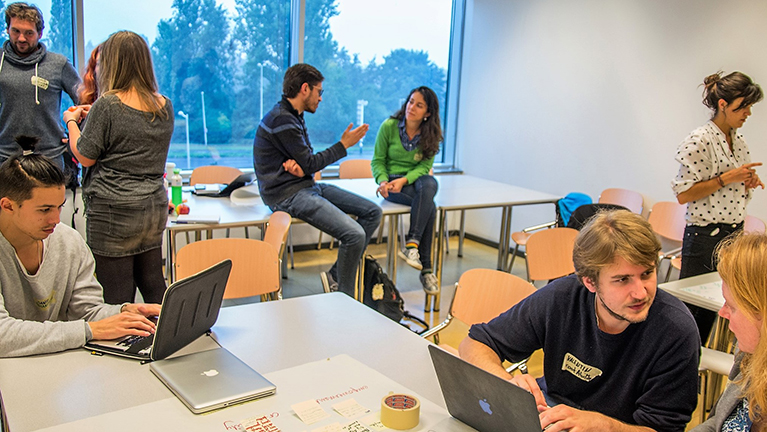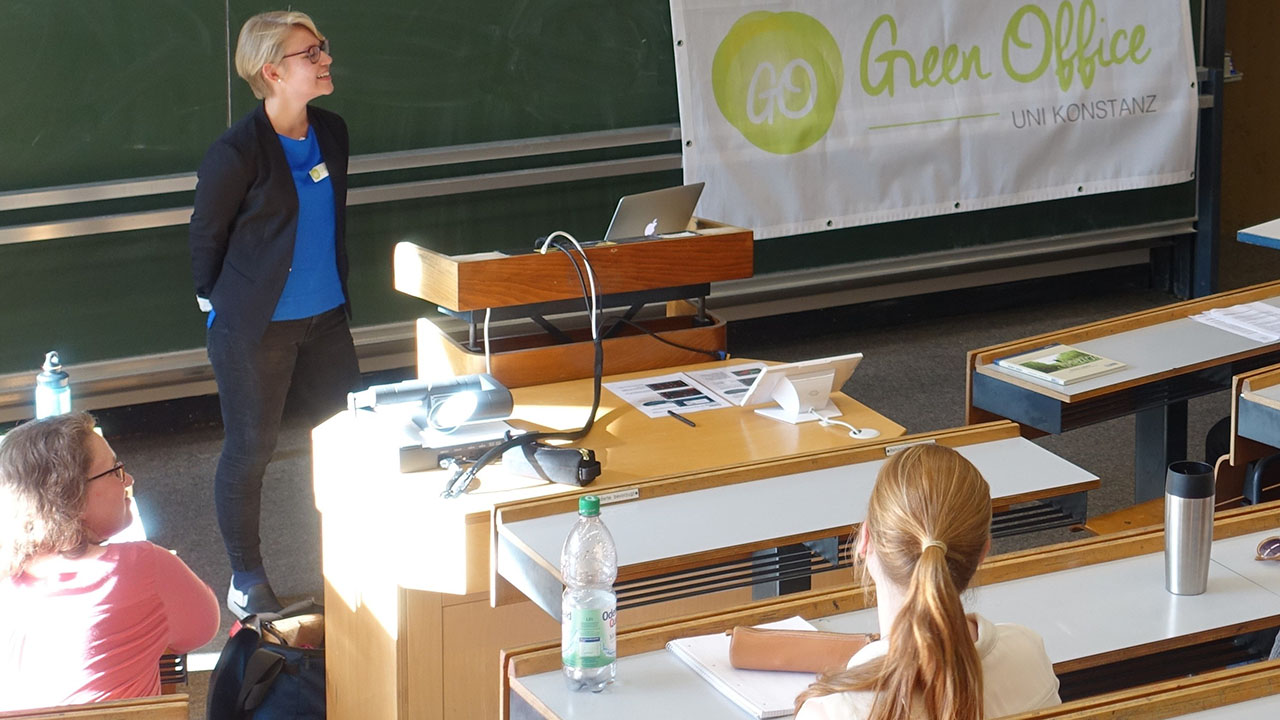How to assess your Green Office’s impact through a proven impact measurement method: 3 options explained
Summary: What impact measurement method is best suited to assess the effectiveness of your Green Office? This blogpost explains 3 proven methods that have been used successfully by dozens of Green Offices around the world. Each method is well suited to a specific goal you might want to reach with your impact measurement.
University Green Offices often struggle to measure their impact. That creates a problem because the lack of tangible impact measurements make it difficult to justify to the university management and community why the Green Office should receive the budget they do, get a budget increase at any point or get a seat at the table when important decisions are made. It also means that you can’t self-evaluate properly and improve as a result. There are relatively simple ways to measure and communicate your impact, however.

Choose the impact measurement method that is in line with your goals
To understand impact measurement, it is important to understand the impact chain and which part of it you are actually measuring. The impact chain model states that with a certain input (resources you put into a project or activity) you create outputs (for example a lecture series on sustainability). These outputs lead to outcomes (for example participants of the lecture series having a better understanding of the issues). This will then hopefully lead to impacts (the participants doing something with that knowledge, like changing their behaviour). It is important to understand which element of the impact chain you are measuring so that you can communicate it clearly and be honest with yourself about what you are doing. However, it is not always possible to measure impacts (which would be ideal). In that case, it is still a good idea to move down the impact chain, measuring the next best category.
So how do you practically measure outputs, outcomes or impacts? Here are three proven methods you can use:
1. Impact measurement method: tangible success stories
The simplest, but still highly effective method of impact measurement and communication is a simple collection of tangible success stories. These may be quantitative or qualitative in nature, but make sure that they are specific. Of course, these successes won’t always be just yours. When that is the case, be honest about your involvement, but don’t sell yourself short either. For example, you might say you “contributed significantly to…” or specifically give a shout-out to your project partners, saying that “the Green Office and [project partner] achieved…”. Again, you will not always be able to describe an actual impact. In that case, describe the outcomes or failing that the outputs.
Here are a few real-life examples of this simple impact measurement method:
Outputs
- Greenwich Sustainability Hub conducted a sustainability assessment of 127 out of 135 study programmes.
- Gothenburg Students for Sustainability organised a sustainability day, attended by 350 students and staff.
Outcomes
- Through the annual Green Teachers Award by Green Office Wageningen, sustainability teachers received more awareness and made new connections.
- Green Office Magdeburg co-created the first sustainability report and long-term strategy, which was then adopted by the university and thus provided a framwork for future achievements in sustainability.
- Green Office Utrecht successfully lobbied for daily vegan meal options in the cafeteria, compared to no vegan options before.
- Green Office Ghent successfully lobbied for a mobility policy, including the rule that the emissions of all flights have to be offset.
Impacts
- Maastricht University Green Office successfully lobbied to boost e-waste recycling by 186% within two years.
2. Impact measurement method: Green Office Movement’s 3D self-assessment tool
While success stories can be great for seeing and celebrating success, as well as communicating with external stakeholders, it does not provide you with an overarching overview of how you are doing in different areas. In fact, it might be seen as cherry-picking only those things that are going well, thus failing to make you aware of any short-comings. That is where the 3D tool developed by us at the Green Office Movement can be useful. It allows you to self-assess your Green Office as a whole over three dimensions:
- Depth (institutional embedding)
- Width (community engagement)
- Length (lasting change)
In that way, you can take more of a meta-view to see where your overarching strengths and weaknesses lie and what you should focus on in the future. Download the tool for free:
3. Impact measurement method: indicators and targets
Success stories and the 3D tool provide you with great tools to show the overall effectiveness of your Green Office. But how do you determine the success of an individual project? The simplest impact measurement method for individual projects is to measure outputs or even better outcomes through individual indicators per project, for which you can then set targets. These can include metrics such as participation in events, feedback ratings by participants, avoided energy consumption in kWh, or achieving one specific but important outcome (such as solar panels being placed on a specific university building).

Green Office Konstanz presenting their sustainability report
An even stronger measurement would be to actually measure the impact. This is often difficult, but might be possible in operations projects, where you might, for example, be able to calculate the actual carbon emissions avoided. In community and education projects such impact measurements are often more difficult to undertake, but can be achieved through representative surveys (though you should be careful about whether you are measuring impact or outcomes, which are both fine, but the distinction is important to keep in mind).
You might also want to take a bigger view of the university as a whole through sustainability reporting, for example with our own UniSAF tool. This allows you to measure the overall performance of the university and provides you with an indirect impact measurement of what all actors working to make the university more sustainable have achieved together. While this impact measurement method doesn’t necessarily allow you to trace back the impacts to specific measures, you can see if you are on the right track as an institution and where more action might be needed. This allows you to focus your activities on the areas that most need it (thus boosting your impact) and it also shows the university management and community that your work is important as it is focussed on areas where action is desperately needed.






